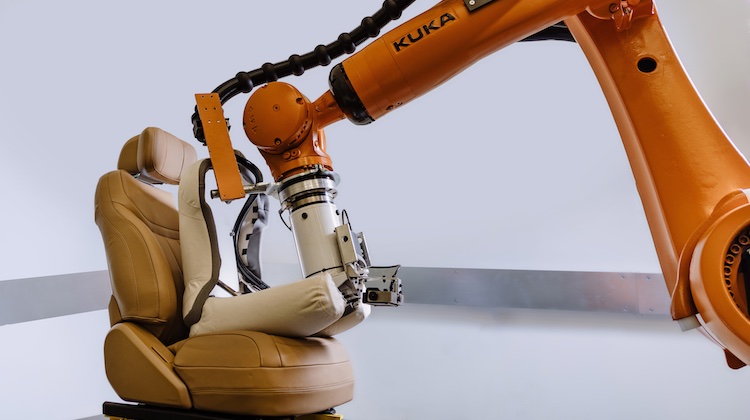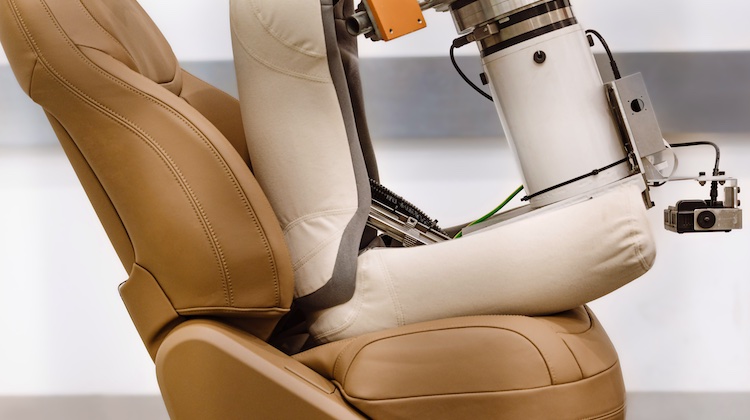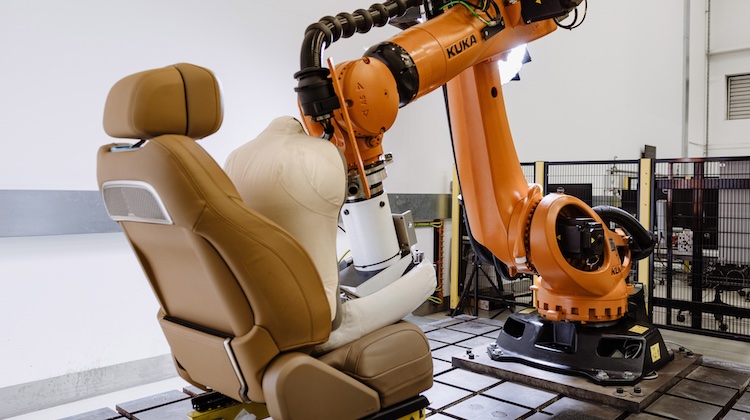
Jaguar Land Rover (JLR) is putting its seats through the paces — with the help of advanced robotics.
JLR recently revealed that it uses four specialized KUKA Occubots to simulate 10 years’ worth of seat usage in just a few days. These robots replicate real human movement — sitting, shifting, twisting — to test how materials and construction hold up over time.
Each Occubot is built on a pressure-sensitive metal frame and programmed to move like a human occupant would in a seat. They can simulate entering and exiting the vehicle, leaning side to side, shifting weight, and adjusting posture — tens of thousands of times. The bots focus pressure on high-wear areas like seat bolsters, cushions, and backrests, giving engineers valuable data about foam fatigue, fabric wear, seam integrity, and long-term comfort.

It’s all part of the automaker’s broader effort to ensure long-term comfort for its customers, especially those purchasing premium and luxury vehicles where expectations are highest.
“Settling into your seat is one of the first experiences when entering one of our vehicles,” Thomas Mueller, JLR’s Executive Director of Product Engineering, said in a news release. “Comfort is critical to luxury, so it’s a make‑or‑break moment for our clients and they expect a consistently comfortable ride over the life of their vehicle.”
To meet that expectation, JLR pairs robotics with human expertise in its engineering facility in Gaydon, England — where it’s invested heavily in advanced testing capabilities. That includes everything from cold-weather climate chambers to semi-anechoic acoustic labs, and more than 30 miles of test tracks built to simulate real-world driving conditions.
“We’ve invested in robots to work alongside our expert engineers and rigorously test every aspect of our seat materials in super quick time,” Mueller said. “Automation like this is a vital part of our comprehensive vehicle quality component testing program, which helps us review vehicle elements over a lifetime of usage and in the most extreme environments.”

This type of testing reflects a broader shift in how automakers are approaching design, craftsmanship, and quality control. Robotics and AI are no longer futuristic ideas — they’re active collaborators on the factory floor. From virtual prototypes to automated durability simulations, manufacturers are blending old-school engineering with cutting-edge tech to build better, longer-lasting interiors.
For auto upholstery pros, it’s a reminder that the industry is evolving fast. OEMs are investing heavily in systems that speed up development, reduce human error, and replicate real-world use with incredible precision. But none of it fully replaces the human touch — it just enhances it. It’s still up to talented engineers, designers, and trimmers to make sure every seat looks good, feels great to sit in and lasts the test of time.
As technology continues to reshape how vehicles are built, shops that embrace innovation — while holding tight to craftsmanship — will be the ones that thrive.
Recent Comments